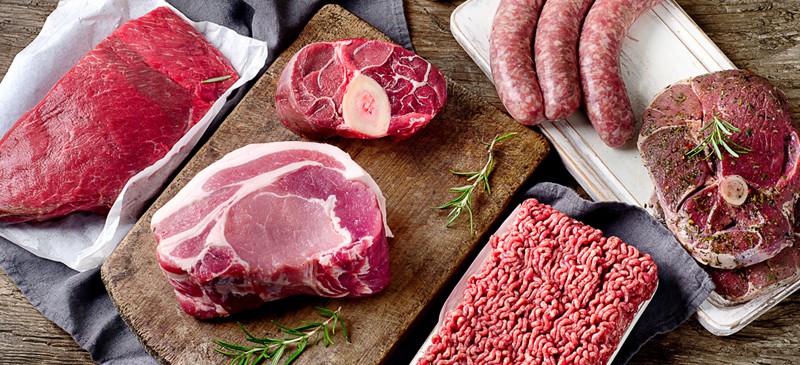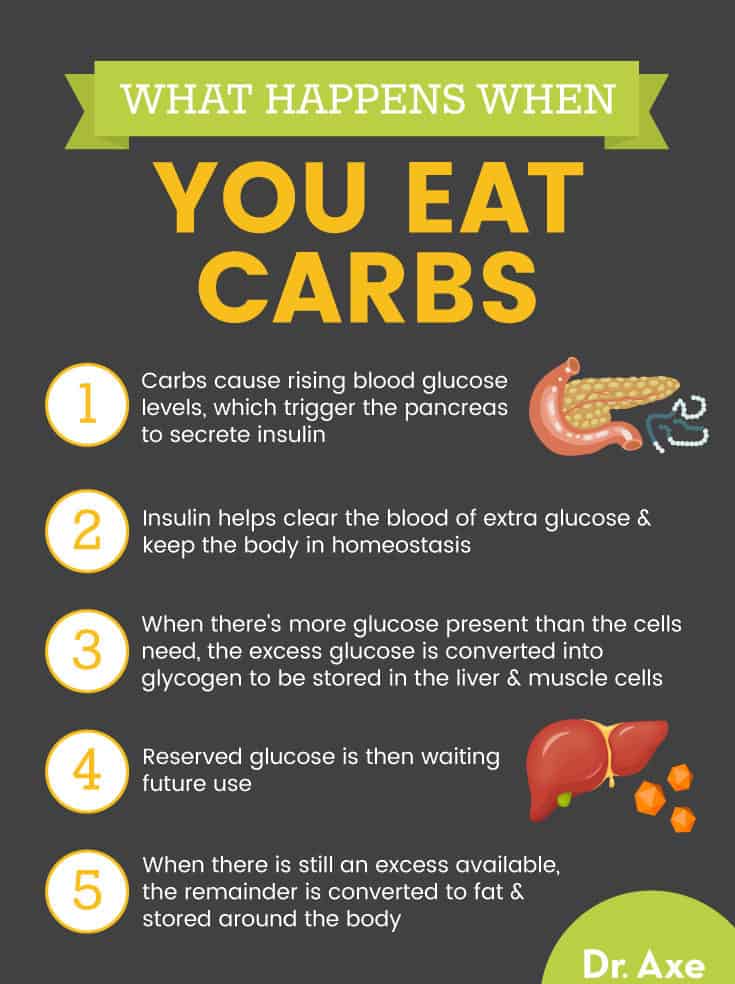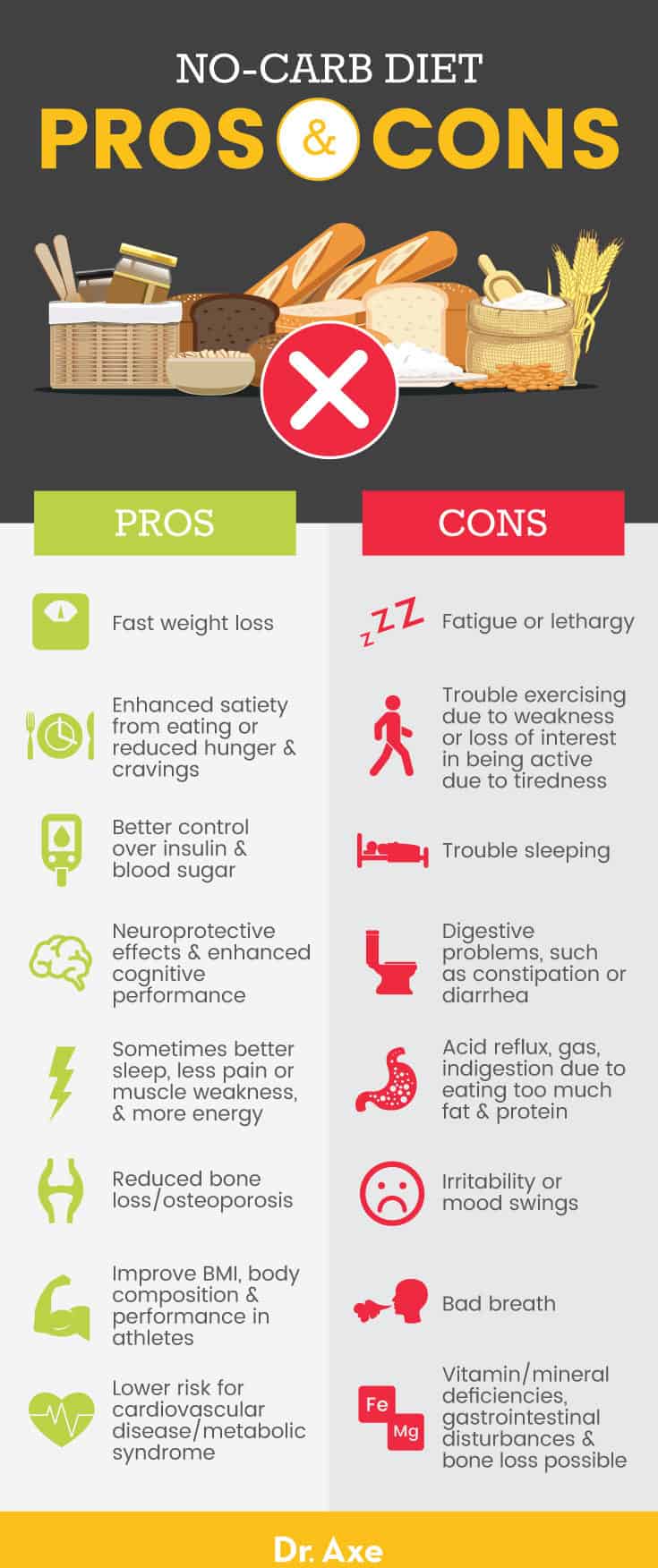This Dr. Axe content is medically reviewed or fact checked to ensure factually accurate information.
With strict editorial sourcing guidelines, we only link to academic research institutions, reputable media sites and, when research is available, medically peer-reviewed studies. Note that the numbers in parentheses (1, 2, etc.) are clickable links to these studies.
The information in our articles is NOT intended to replace a one-on-one relationship with a qualified health care professional and is not intended as medical advice.
This article is based on scientific evidence, written by experts and fact checked by our trained editorial staff. Note that the numbers in parentheses (1, 2, etc.) are clickable links to medically peer-reviewed studies.
Our team includes licensed nutritionists and dietitians, certified health education specialists, as well as certified strength and conditioning specialists, personal trainers and corrective exercise specialists. Our team aims to be not only thorough with its research, but also objective and unbiased.
The information in our articles is NOT intended to replace a one-on-one relationship with a qualified health care professional and is not intended as medical advice.
No-Carb Diet Plan Guide, Plus Foods to Eat vs. Avoid
July 31, 2019

Take a moment and imagine slashing your carbohydrate intake by 90 percent. It sounds incredibly challenging but still possible. Now imagine following a no-carb diet plan completely free of all carbohydrates, including pasta, bread, legumes, baked goods, sweets and even fruits and vegetables.
To many, the thought of a low-carb diet plan for weight loss, let alone a diet without any carbohydrates at all, probably seems like a cruel form of torture.
As opposed to the high-carb and sugar-addicted diets that most people living in industrialized nations eat today, no-carb diets tend to spark fast weight loss by reducing foods like grains, fruits and sweeteners.
Cutting these sources of carbs from your diet changes what type of macronutrients your body uses for fuel. Each no-carb/low-carb diet is a bit different, but most drastically reduce glucose (sugar) intake over the course of several phases, resulting in a diet that keeps carbs to about 20–50 net grams or even less daily.
So should you, or shouldn’t you, give low-carb dieting a try? What fruit is lowest in carbs? And does this controversial diet plan really work?
Below you’ll find out how no-carb diets work, which foods are included, potential benefits and also the risks involved.
What Is a No-Carb Diet? Is It Even Possible?
The no-carb diet is comparable to low-carb diets and the ketogenic diet, a diet that severely limits carbohydrate intake and focuses on healthy sources of fat and protein alongside very low-carb foods.
While how many carbs are in a low-carb diet can vary quite a bit, most restrict carb intake to less than 30 percent to 40 percent of total daily total calories. On a no-carb diet, however, even foods that contain small amounts of carbohydrates are off-limits completely.
Although it may come with similar health benefits as low-carb and ketogenic diets, it also comes with a whole different set of risks and challenges as well and must be done very carefully to prevent adverse side effects.
This is because carbs are found in pretty much all types of foods, even if it’s only in small amounts. While there are low-carb vegetables, for instance, there aren’t any no-carb vegetables that are completely carbohydrate-free.
While theoretically you could eat very close to no carbs — such as from only consuming things like meat, oils or lard — this is not exactly a very healthy way to eat. Most very low-carb diets include at least some plants for fiber and essential nutrients, with an emphasis on those lowest in carbs like leafy greens or broccoli.
Unlike most weight loss diets that usually rely on calorie counting and/or strict portion control, no-carb diets result in weight loss by focusing primarily on reduction of carb-containing foods.
Some sources of carbohydrates that are restricted on a no-carb diet include (but are not limited to):
- Fruits
- Vegetables
- Legumes, including beans, peas and peanuts
- Grains, such as pasta, bread, rice and oats
- Dairy products
- Sugar and sugar-sweetened beverages like soda or juice
- Condiments like ketchup, salad dressing or sauces
- Nuts and seeds
- Crackers and chips
- Cakes, cookies and sweets
Conclusion: No-carb diets eliminate all carb-containing foods from the diet. Fruits, vegetables, legumes, grains, dairy products, sugar, condiments, nuts, seeds and processed foods are all limited on this restrictive diet.
Ketosis and How No-Carb Dieting Works
In order to evaluate the benefits and potential risks of a no-sugar, no-carb diet, it’s important to understand how carb digestion and fat-burning works.
When you eat carbohydrates, blood sugar levels rise, which triggers the pancreas to secrete insulin. This important hormone helps shuttle sugar from the bloodstream into the cells where it can be used for energy.
When there’s more glucose (sugar) in your blood than your cells can use, the extra is converted into glycogen and stored in the liver and muscle cells for later use. If there’s even more left over, they are converted to fat and stored throughout the body.
Research suggests that for those who lose weight while reducing carbs, it’s likely due to consuming less calories overall and feeling full due to adequate protein and fat intake. Protein and healthy fats tend to be very satisfying, killing most sugar/carb cravings.
Another reason no-carb diets increase weight loss is because they often cause your body to enter into “ketosis.”
What is ketosis? It means that the body begins burning fat instead of sugar for fuel.
Severely restricting carbohydrates to less than 20 grams a day is often needed to enter into ketosis, which causes ketones (substances left behind when the body burns fat) to build up in your body.
Ketosis can be beneficial in some cases but also potentially has side effects, such as nausea, headaches, mental and physical fatigue and bad breath.
Conclusion: Eliminating carbs from the diet can put your body in a state of ketosis, which causes your body to start burning fat instead of sugar for fuel. No-carb diets are also higher in proteins and fats, which are considered more satiating than carbohydrates.

Foods to Eat
While a very low-carb diet may help you achieve some of the benefits mentioned above, it’s only really likely to work for more than a few weeks if you actually enjoy the types of foods that are very low-carb (meats and oils, for example). Examples of healthy low-carb foods and no-carb diet foods include:
- Organic and grass-fed beef, turkey and chicken
- Pastured eggs from chicken, turkey, etc.
- Fish and seafood (preferably wild-caught fish, such as salmon, haddock or trout)
- Organic or unrefined coconut oil, grape seed, walnut, avocado and olive oil
- Butter and lard
- Hard cheese, butter, sour cream and heavy cream (choose grass-fed and organic whenever possible, ideally made from raw milk). Approved cheese products include blue cheese, cheddar cheese, goat, feta, Swiss, Parmesan and American cheese
- Herbs and spices, like curry powder, cinnamon, thyme, cayenne pepper, cumin, paprika, chili powder, 5 spice powder, Dijon mustard, parsley, oregano, basil, tarragon, black pepper, garlic (whole or ground)
- Non-starchy veggies, such as spinach, cauliflower, Brussels sprouts, green beans, cabbage, cabbage, canned cucumber, tomatoes, Jalapeño peppers, broccoli, bell peppers, lettuce and asparagus
- Other sweeter veggies have more carbs but can still be healthy. These include tomatoes, zucchini or eggplant, squash, peppers, carrots, etc.
- Water, tea and coffee
Conclusion: Most foods included on the no-carb diet are meat, fish, poultry and fats/oils. Other low-carb foods include dairy, non-starchy vegetables, herbs and spices.
Foods to Avoid
You may be wondering: what carbs should I avoid to lose weight? Just important as filling your diet with the right foods is limiting other carb-containing ingredients.
Here are some foods to eliminate as part of a no-carb diet:
- All grains (including wheat, barley, oats, rice and other whole grains). This also includes all foods made with grain flour, such as bread, cakes, biscuits, chips, cereal, muffins, pasta, etc.
- Sugar and foods that contain artificial or added sweeteners (honey, cane sugar, coconut sugar, etc.)
- Most commercial fruits and fruit juices
- Most pre-made condiments, sauces or packet mixes
- Most dairy products that contain milk, yogurt, ricotta or cottage cheese. Higher-fat, low-carb cheeses are allowed because they have very little carbs
- Alcohol, soda and other sweetened drinks
For the sake of keeping synthetic ingredients out of your diet, you may also want to avoid “diet”or light foods that have reduced fat and artificial ingredients. To make up for lost fat, these products are usually made with extra thickeners, emulsifiers or artificial sweeteners.
Although they are not high in carbs, you should also avoid foods made with trans fats or hydrogenated oils, which include most junk foods or fast/fried foods.
Conclusion: Grains, sugars, fruits, juices, condiments, dairy products and carb-containing drinks should all be eliminated on a no-carb diet.
Short-Term Benefits
What kind of results can you expect when eating a very low-carb/no-carb diet? Although not every person reacts to ketosis or a no-carb diet positively, research shows that for those who make good candidates, the following health benefits may be experienced:
- Fast weight loss
- Enhanced satiety from eating or reduced hunger and cravings (especially for sweets)
- Better control over insulin and blood sugar (glucose) spikes. This can be especially beneficial for prediabetics or diabetics, although low-carb diets aren’t the only way to reduce diabetes risk factors
- Neuroprotective effects and enhanced cognitive performance, including less brain fog or dips in energy, improved memory in the elderly, and reduced symptoms of epilepsy
- Sometimes better sleep, less pain or muscle weakness, and more energy overall
- Reduced bone loss or osteoporosis
- In athletes, possible favorable changes in body mass and body composition, along with increase in the relative values of maximal oxygen uptake (VO2max) and oxygen uptake at lactate threshold (VO2 LT)
- In some cases, lower risk for cardiovascular disease or metabolic syndrome, including normalizing factors like blood sugar or unhealthy cholesterol levels
Weight loss, sometimes even substantial reductions in body fat, are very common when eating a very low-carb diet. The reason this happens is due to the effects of reducing glucose, as described above.
Once glucose from carbohydrate foods is no longer available for energy, the body will use stored body fat instead, or fat and protein consumed from foods.
Removing foods like fruits, starchy veggies, pasta and bread from your diet will also cause your body to release less insulin, helping balance blood sugar levels reduce risk for diabetes. While this is very helpful, it’s not the only way to shed extra weight or improve things like blood sugar and cholesterol.
Research shows that almost any diet that helps you reach a healthier body weight can reduce or even reverse risk factors for cardiovascular disease/metabolic syndrome. Remember that the diet type of diet for you is the one you can actually stick with.
Related: What Is the Pegan Diet? Benefits, Downsides & How to Follow It
No-Carb Diet Plan and Sample Menu
So what can you eat on a no-carb diet? If you do decide to follow a no-carb diet plan, you will be eating meat and fat/oil for all three meals as well as any keto snacks.
It may be a good idea to gradually decrease your carb intake instead of quitting carbs cold turkey.
Here’s what a typical no-carb diet menu may look like, plus some easy low-carb diet recipes that you can try out as well:
Day One
- Breakfast: Scrambled eggs cooked in olive oil
- Lunch: Seared salmon with butter
- Dinner: Herbed turkey breast
- Snacks: Jerky
Day Two
- Breakfast: Turkey bacon cooked in coconut oil with keto coffee
- Lunch: Grilled sardines
- Dinner: Garlic butter steak
- Snacks: Pepperoni slices
Day Three
- Breakfast: Hard-boiled eggs
- Lunch: Baked chicken breast with bone broth
- Dinner: Garlic lamb roast
- Snacks: Turkey slices
Conclusion: Because carbs are eliminated on this restrictive diet plan, a typical no-carb diet menu is generally made up of meat, fats and oils.

Risks and Side Effects
While a no-carb diet plan may come with some benefits to health, keep in mind that you can get these same benefits through a low-carb or ketogenic diet instead. Not only are these diets easier to follow, but they are also far less restrictive and associated with less risks and low carb diet side effects.
Is a no-carb diet dangerous? Because no-carb diet plans eliminate virtually all sources of carbs, including healthy carbs, there is a much higher risk of nutrient deficiencies.
Whole grains, for instance, provide B vitamins, magnesium and vitamin E, while fruits and vegetables contain a wide array of vitamins and minerals not found in meats or fats.
It’s also important to make sure you’re meeting your calorie needs on this plan. Severe calorie deprivation can lead to symptoms like fatigue, low blood sugar and muscle wasting.
Excessively high protein intake could also worsen kidney function in those with kidney disease. Because a no-carb diet is very high in protein, it is not recommended for individuals with impaired kidney function.
Furthermore, this diet is difficult to sustain and following a no-carbs diet plan for 2 weeks or more can become dangerous due to the risk of long-term side effects. Those with certain health conditions like diabetes should consult with their doctors before going on a low-carb or no-carb diet as it may affect dosages for medications like insulin.
Below are some of the potential dangers or symptoms that may be caused by greatly reducing carbs in your diet:
- Fatigue or lethargy
- Trouble exercising due to weakness or loss of interest in being active due to feeling tired
- Difficulty sleeping
- Digestive problems, such as constipation or diarrhea (usually due to low fiber intake)
- Acid reflux
- Gas
- Indigestion
- Irritability or mood swings (which can occur when reducing carb intake, which impacts serotonin levels)
- Bad breath
- Vitamin or mineral deficiencies
- Bone loss
Check with your doctor or health care provider before starting any very low-carb diet, especially if you have any health conditions that require monitoring and medications, such as diabetes or heart disease. And as always, listen to your body, and if you experience any negative side effects, talk to your doctor immediately and consider increasing carbohydrate intake.
Conclusion: No-carb diets are very restrictive, difficult to sustain and could increase your risk of nutritional deficiencies. Low-carb or ketogenic diets are better alternatives that are safer, more effective and less likely to result in significant side effects.
Related: Low-Carb, High-Fat Diet vs. Low-Fat Diet: Which Helps You Live Longer?
Final Thoughts
- A no-carb, no-sugar diet focuses on eliminating all carb-containing foods from the diet, which is thought to help increase weight loss and fat-burning.
- Ingredients permitted on the no-carb diet food list include meat, fish, poultry and healthy fats. Other low-carb foods that may be allowed include non-starchy vegetables, hard cheeses and eggs.
- Meanwhile, foods that are not permitted as part of the no-carb diet list include grains, sugar, fruits, starchy vegetables, pre-made condiments, dairy products and alcohol.
- The diet is highly restrictive, which can increase the risk of nutritional deficiencies and other adverse side effects. It’s also difficult to follow long-term as most meals will be made up solely of meats and oils, and there are limited no-carb diet recipes available online.
- Instead, consider trying a low-carb or ketogenic diet, both of which can achieve the same results, but without the negative side effects associated with this incredibly restrictive eating pattern.




